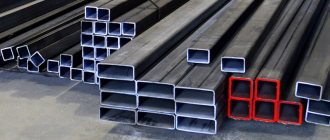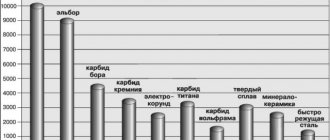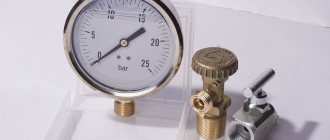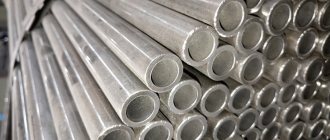Gas analyzer
(gas analyzer, gas detector, gas detector) (eng. gas detector, gas analyzer, gas monitor) – a control and measuring device designed to measure the composition and quantity of concentrations of one measured gas or a group of measured gases and vapors in a gas-air mixture.
In gas analyzers, a gas mixture is supplied to the sensitive element (cell, sensor). Multicomponent portable gas analyzers combine several sensors for different gases located in one housing. Stationary devices may have several remote sensor units for certain components.
Gas analyzers are often called not only measuring instruments, but also devices such as leak detectors, indicators and alarms.
There are 2 types of gas analyzers depending on the design: manual and automatic
. A variant of a manual gas analyzer is the absorption model, which uses the technology of absorbing a gaseous environment with reagents. Automatic gas analyzers, as a rule, work using the technology of constructing the physico-chemical or physical characteristics of one gas component or the entire gas mixture.
Today, the most common are automatic gas analyzers.
Depending on the principle of operation, they can be divided into three main groups:
1.
Gas analyzers, the measurement principle of which is based on physical methods of analysis containing auxiliary chemical reactions.
Using these devices, you can measure the volume or pressure of a gas-air mixture as a result of chemical reactions of its constituent components. 2.
Gas analyzers, the measurement principle of which is based on physicochemical methods of analysis, containing auxiliary physicochemical processes (photocolorimetric, electrochemical, thermocatalytic and other types).
- Photocolorimetric
gas analyzers monitor the color change of specific gases and vapors when they interact with the controlled component of the gas-air mixture. - Using electrochemical
gas analyzers, the mass concentration of gas in the mixture is determined by the electrical conductivity of the electrolyte that absorbed this gas. - Thermochemical
gas analysis instruments measure the thermal effect of the catalytic oxidation (combustion) reaction of a certain gas component.
3.
Gas analyzers that perform measurements using purely physical methods of analysis (optical, thermal conductometric, thermomagnetic, etc.).
- Optical ones
measure optical density, absorption spectra or emission spectra of a gas-air mixture. - Thermoconductometry
measures the thermal conductivity of gases. - The main purpose of thermomagnetic
gas analyzers is to perform the function of measuring oxygen concentration with significant magnetic susceptibility.
Manufacturers of gas analyzers currently use almost all of the above gas analysis methods, but electrochemical devices are most widely used, as they are the cheapest, most versatile and simplest.
Disadvantages of this method: low selectivity and measurement accuracy; short service life (up to 3 - 4 years) of gas-sensitive sensors exposed to aggressive environments and high concentrations. All currently existing gas analytical devices are classified based on structural and technological details
:
— by the number of measurement channels (control points) (single-channel and multi-channel); — by the quantity of controlled gases (single-component and multi-component); — by design (individual, stationary, portable); — by functionality (leak detectors, gas analyzers, indicators, alarms); — according to its intended purpose (for monitoring the air of a working area, for analyzing industrial emissions, for monitoring technical processes, for monitoring the exhaust gases of cars with diesel and gasoline engines, for environmental monitoring).
Areas of use of gas analyzers
Indicating devices are an integral part of any production process, in particular in the chemical industry.
There are several areas in which gas composition analyzers have found their application:
- Monitoring the safety of the atmosphere, for example, in a production workshop.
- Determination of the percentage (or threshold) content of carbon monoxide and exhaust gases in the ambient air. A similar procedure is necessary, for example, in car repair and maintenance bays. This task is especially relevant in enclosed spaces.
- All environmental companies use industrial gas analyzers to determine ambient air pollution.
- Similar devices have found their application in medicine. Indicator-type systems are widely used to search for alcohol vapor in exhaled air.
Portable indicators are used to detect domestic gas leaks in residential premises.
Popular portable optical
The operating principle of the devices is based on measuring the radiation of energy flows. The devices have two cameras. One of them is filled with clean air, and the other with the analyzed gas mixture. The concentration of substances is determined by the difference in the obtained measurement results. The models have high resolution. This allows them to be used for analyzing microconcentrations of hazardous substances in industrial gases.
PGA-200
Country of origin: Russia. The model is included in the state register and has an explosion-proof design. Designed to measure the concentration of explosive and toxic gases. PGA-200 is used as a personal device. Light weight (0.3 kg) allows you to carry it in your work clothes pocket.
When determining the maximum permissible concentration of substances, the gas analyzer gives light and sound signals. Operating temperature range from -20°C to +40°C.
Advantages:
- accelerated battery charging;
- ability to connect to a PC;
- autosaving of measurement results.
Flaw:
- the need to warm up the device before starting measurements.
Review
| Artyom D. |
| Compact device with good measurement accuracy. Works without breakdowns. |
ANCAT-7664Micro
Country of origin: Russia. The model is included in the State Register. The device can measure up to 4 components in various combinations. The concentration of each substance in the gas mixture is displayed on a digital display. A sound and light indicator signals an increase or decrease in the maximum permissible concentrations of substances.
Advantages:
- possibility of manual adjustment of alarm limits;
- there is a function of forced sampling;
- saving inspection results for a year;
- ability to work without calibration for up to 6 months;
- availability of explosion protection;
- light weight and size.
Flaws:
- not identified.
Review
| Gennady Yu. |
| I bought the device more than 2 years ago. I use it every day. There are no complaints about the work. |
Features of portable gas analyzers
Depending on the rules of use, all indicator structures are divided into several groups. Portable instruments are most often used to determine the level of a particular gas in various territories or areas (in park areas, in areas with a high degree of pollution), in wells and tunnels, closed vessels, in factories, in production workshops.
There is another use for portable instruments - they are widely used for calibrating stationary models.
The advantages of choosing a portable device include:
- Affordable price of the device.
- One of the main positive properties is the mobility of the structure.
- Simple operating rules.
- The advantages include an expanded range of detectable gases.
- The high degree of sensitivity of the device determines its widespread use in all areas of industry and in everyday life.
- All modern models can additionally be connected to sensors of various operating principles (optical, electrochemical, catalytic varieties).
- The fastest possible detection of explosive gases in a room.
- All designs have a lightweight body and a comfortable streamlined shape.
- For many models, manual adjustment of sensitive thresholds for the gases being studied is possible.
When choosing a portable gas analyzer, you should give preference to models with additional functions: Wi-Fi signal transmission for connecting to a computer or laptop, built-in memory and an electronic journal with research dates.
Exploitation
After purchasing a sensor, it is necessary to determine the composition of the gas on which its operation will be directed. Then the sensitive elements of the device are adjusted. Today, most of them are focused on various gas properties.
For the sensor to start working, it is first connected to an electrical circuit. When the LEDs on the indicator strip light up, the equipment will begin to work. Then you need to give the device a little time to warm up.
If you purchased a device with an alarm, you need to connect it to your phone. After this, you can launch a special application and check the connection. Through it, you can remove and add devices that should receive a signal.
During operation, it is recommended to pay special attention to diagnostics. So, you should periodically review all elements of the device and test its performance.
This can be done with a simple gas lighter. It must be brought to the sensitive element of the device, without lighting it.
A functioning device must react to excessive concentration of the mixture and signal about it. You should also check whether the leak alarm is clearly audible. After reducing the concentration, the device should independently return to its original position.
For a gas analyzer with a solenoid valve, see below.
Features of stationary analyzers
The most accurate devices today include stationary devices that can detect even the slightest fluctuations in dangerous vapors and gases in a room.
Installation of such devices is carried out in boiler rooms, industrial freezers, gas distribution points, chemical and biological laboratories, sewer systems and kilns for firing products.
Among the advantages of choice it should be noted:
- High accuracy and reliability of studying the gas composition of air.
- Very affordable price.
- Possibility of simultaneous monitoring of several gases at once.
- Modern models are characterized by the presence of remote control over the composition of the air environment in the room under study.
This device is characterized by a high degree of protection of the housing from damage and exposure to external factors.
What is the essence of the testing methodology?
The verification procedure is a document with detailed operations described to confirm the suitability of the gas analyzer. The approach is different for different brands and models.
Excerpt from the methodology for gas analyzers models 1800, 1900, 2200, 5100, 5200 from Servomex Group Limited: the first point is verification operations
The document usually includes 7 points:
- Verification operations. We are talking about the main indicators, including errors.
- Facilities. These include instruments and gas mixtures for testing and determining metrological characteristics.
- Safety requirements.
- Conditions for carrying out.
- Preparation.
- Carrying out.
- Registration of verification results. At this stage, the verifier draws up a protocol and issues a certificate document.
Direct verification begins by connecting a cylinder with test gas to the control valve. Then a rotameter is brought to the exit. The latter is connected with an adapter for calibration work. The mixture is then allowed to enter the gas analyzer, and when the device gives readings, they are recorded.
The specialist will calculate the error and determine the time it took to establish the readings. The inspector will compare the indicators with the standards and formalize the results.
Types of analyzers by operating principle
Different models are characterized by different operating principles, depending on which the following types of gas analyzers are distinguished:
- Thermal devices that respond to the thermal conductivity of a gas mixture. Such analyzers determine the rate of temperature transfer in a gaseous environment.
- There are pneumatic models. Such sensors determine the viscosity of the air mixture within one room. A distinctive feature of the device is the absence of electrical parts, which allows the indicator to be used in rooms with explosive gases.
- Magnetic structures used to determine the amount of oxygen in the air or the gas mixture under study are widely known. Very often, such devices are used in service stations to study the efficiency of fuel combustion based on the final oxygen content in the exhaust gas.
- Infrared models of gas analyzers should also be highlighted. Such indicators irradiate the mixture under study with IR rays, and sensitive sensors determine the level of absorption of light photons by molecules. All analyzers of this type have a very durable housing that protects the indicator from explosion. For this reason, infrared analyzers are often used at hazardous technical and chemical facilities.
- In practice, an ionization analyzer can be used. A sensor of this type determines the thermal conductivity of the gas environment and the level of ionized gases. A violation of thermal conductivity is immediately displayed and recorded by sensors. However, work with such devices should be carried out in safe rooms, without the risk of fire.
- An analyzer based on ultraviolet radiation works on a similar principle to an infrared sensor.
Very often there is a luminescent type of gas analyzer, which determines the luminescence properties of gases. The degree of manifestation of this indicator may vary, depending on the presence of impurities in the composition of the gas mixture.
Criteria for selecting a device for gas analysis
The choice of a gas analyzer depends on the intended scope of application.
When purchasing, compliance with the requirements of the Russian Federation, corporate regulations for the coverage of measurements and the degree of alarm is checked. The compliance of the level of explosion protection specified in the passport with what is available at the place of use is monitored.
The selection takes into account the following parameters:
- type of measurement channel;
- type of sampling (internal, external, diffusion);
- the ability to work autonomously on batteries in cold weather;
- additional functions.
The number of components being studied is taken into account, since the cost depends on their availability.
Range of gases determined
For both domestic use and industry, it is important to know the spectrum of gases being detected for a particular device.
Modern gas analyzers are able to detect the following types of gases in the air mixture:
- Carbon monoxide, which is often necessary for domestic use.
- Hydrogen sulfide most often accumulates in wells, sewers, and sewer systems. Therefore, researchers and repair teams take portable devices with them.
- The percentage of oxygen in the room or exhaust gases.
- Methane.
The spectrum of analytes also includes propane and sulfur dioxide.
Optimal portable thermochemical
The models are most effective for measuring the concentration of flammable gases. Main scope of application: gas stations, gas stations, oil refining enterprises, factories for the production of paints and varnishes. The operating principle is based on the oxidation of flammable impurities in a special chamber. The process is accompanied by the release of heat, which heats the spiral (platinum thread) of the device, changing its electrical resistance.
Using a jet pump, the gas mixture is pumped through a special chamber, which acts as an equilibrium bridge. It contains one thermistor, the second is located in a compartment filled with clean air. When passing through the chamber, the gas mixture heats the thermistor to the combustion temperature of a certain component. The result of this is a change in its electrical resistance. The circuit opens. The imbalance value is recorded by the measuring unit and displayed on a digital display.
CASPER 200
Country of origin: Italy. The model is used to measure oxygen and carbon monoxide. CASPER 200 has 2 built-in cells. One is for oxygen, the other is for carbon monoxide. The device readings can be displayed on a PC or smartphone running Android. Operating temperature range from -5°C to +45°C.
Advantages:
- ability to connect an external printer;
- saving the last 99 measurement results;
- Calibrated sensors can be changed independently.
Flaw:
- does not have explosion protection.
Review
| Igor S. |
| The model has a powerful battery. Charging lasts for 10-12 hours. |
STX-17
Country of origin: Ukraine. The model is designed to control the concentration of flammable gases and vapors. It is included in the State Register. The main scope of application of the device: enterprises of the chemical and oil and gas industries.
It is advisable to use gas analyzers for measuring gas mixtures in empty fuel containers, wells, gas stations and gas stations.
Advantages:
- wide measurement range;
- digital display;
- self-test;
- two alarm thresholds.
Flaw:
- high price.
Review
| Denis L. |
| The model is reliable, but I am not satisfied with the reading error of 0.2%. |
Photo of the gas analyzer
Best electrochemical portable
The operating principle of the devices is based on electrochemical compensation.
There are several types of such devices:
- potentiometric (measure field strength);
- galvanic (detects changes in electrical conductivity);
- conductometric (record changes in current and voltage.
All types of devices are designed for measurements in hazardous areas.
HOBBIT-T portable
Country of origin: Russia. A multichannel gas analyzer is used to measure the concentration of flammable gases. The number of sensors in the device can be determined when placing a purchase order.
With the help of HOBBIT-T, measurements of gas mixtures are made in wells and sewer manholes before people are lowered into them. Operating temperature range from -40°C to 50°C.
Advantages:
- low weight and dimensions;
- battery discharge control;
- presence of light and sound alarms.
Flaw:
- high price.
Review
| Elizaveta K. |
| The device has been in regular use for 3 years. So far it works without any complaints. |
OKA-92
Country of origin: Russia. Model with remote sensor and digital display. Designed to control the lack or excess of oxygen in the working area.
Advantages:
- compactness;
- reliability;
- presence of sound and light alarms.
Flaw:
- a bit heavy for a laptop.
Review
| Maria Sh. |
| The device is reliable, but the reading error is large. |











